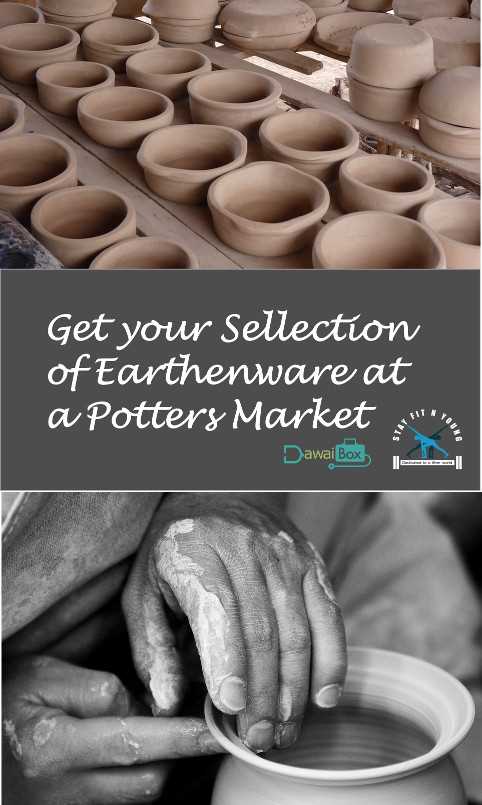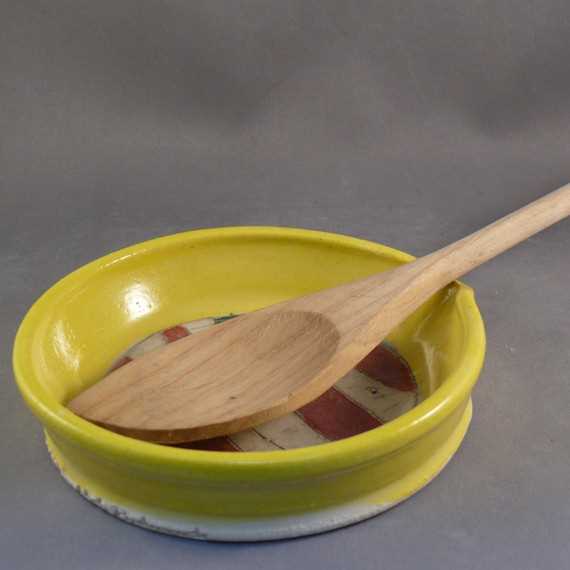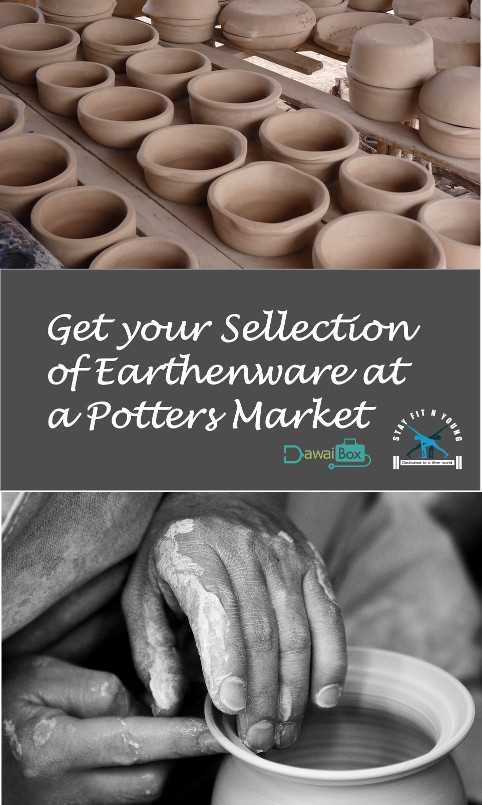When it comes to pottery, it’s important to know if it is food safe before using it for cooking or serving food. Using pottery that is not food safe can lead to harmful chemicals leaching into your food and causing health issues. So, how can you determine if pottery is food safe? Here, we will provide expert tips and advice on how to ensure the pottery you are using is safe for food.
One of the key factors to consider when determining if pottery is food safe is the materials used in its production. Pottery made with lead glaze or any other toxic materials should never be used for food. Lead, in particular, is highly toxic and can be ingested when it leaches into food. Look for pottery that is labeled “food safe” or “lead-free” to ensure that it meets safety standards.
Another important aspect to consider is the firing temperature of the pottery. Pottery that has been fired at high temperatures is more likely to be food safe, as the high heat helps to eliminate any potential toxins. Pottery that has not been fired at high temperatures may not be as safe for food use. So, it’s important to check the firing temperature of the pottery before purchasing or using it.
In addition to checking the materials and firing temperature, it’s also a good idea to consider the durability and quality of the pottery. High-quality pottery is less likely to leach harmful substances into food. Look for pottery that has a smooth, even glaze and shows no signs of cracking or chipping. This will ensure that the pottery is less likely to develop cracks or chips that could expose your food to potentially harmful substances.
By following these expert tips and advice, you can confidently determine if pottery is food safe. Remember to always check the materials used, the firing temperature, and the overall quality of the pottery before using it for cooking or serving food. Your health and the health of your loved ones should always come first!
Understanding Food Safety
When it comes to pottery, one important factor to consider is its food safety. Pottery that is not food safe can leach harmful substances into your food and potentially pose health risks. To ensure that your pottery is food safe, it’s important to understand the factors that contribute to its safety.
1. Materials
The materials used in making pottery can greatly impact its food safety. Pottery made from certain types of clay or glazes may contain lead or other toxic substances that can leach into food. It’s important to choose pottery that is made from food-safe materials, such as lead-free clay and glazes.
2. Glazes
Glazes are a crucial component of pottery, as they provide a smooth, glossy finish and enhance the durability of the piece. However, not all glazes are food safe. Some glazes may contain harmful chemicals that can contaminate food. Look for pottery that has been certified as food safe or specifically labeled as such.
3. Testing
If you’re unsure about the food safety of a particular piece of pottery, you can have it tested by a professional. There are labs that specialize in testing the safety of ceramic and pottery products. They can analyze the materials used in the pottery and determine if it is food safe. This can provide you with peace of mind and ensure the health and safety of you and your loved ones.
4. Care and Use
Even if your pottery is food safe, it’s important to care for and use it properly to maintain its safety. Avoid using pottery in the oven or microwave unless it is specifically labeled as oven or microwave safe. It’s also important to hand wash your pottery instead of putting it in the dishwasher. Dishwasher detergents and high heat can potentially damage the pottery and compromise its food safety.
5. Regulatory Guidelines
In many countries, there are regulatory guidelines and standards in place to ensure the food safety of pottery. Familiarize yourself with these guidelines and make sure the pottery you purchase complies with them. Look for pottery that has been tested and certified by reputable organizations or meets specific regulatory standards.
In conclusion, understanding food safety is crucial when it comes to choosing pottery. By considering the materials, glazes, testing, care and use, and regulatory guidelines, you can determine if a piece of pottery is food safe and make an informed decision that prioritizes the health and safety of you and your loved ones.
Types of Pottery
There are several types of pottery that vary in terms of composition and intended use:
- Earthenware: This type of pottery is made from clay that is fired at a low temperature. It is porous and usually covered with a glaze to make it waterproof. Earthenware is commonly used for everyday dishes and decorative items.
- Stoneware: Stoneware is made from a denser type of clay that is fired at a higher temperature. It is less porous than earthenware and does not require a glaze to be waterproof. Stoneware is often used for dishes that are meant to withstand daily use, such as dinnerware sets and baking dishes.
- Porcelain: Porcelain is a type of pottery that is made from fine clay and fired at a very high temperature. It is non-porous, translucent, and has a smooth, glass-like finish. Porcelain is commonly used for fine china, tea sets, and decorative items.
It’s important to note that while some pottery may be labeled as “food safe,” it’s always a good idea to check for proper certification or consult with the manufacturer to ensure that it meets safety standards for food use.
Factors Affecting Food Safety
When determining if pottery is food safe, there are several important factors to consider. These factors can impact the safety of the pottery and its suitability for holding and serving food. By understanding these factors, you can make informed decisions about the pottery you use in your kitchen.
- Materials Used: The materials used in pottery can greatly affect its food safety. It is essential to ensure that the pottery is made from food-safe materials, such as lead-free glazes and clay free from harmful contaminants.
- Glazes: The type of glaze used on pottery can have a significant impact on its food safety. Some glazes may contain lead or other harmful substances that can leach into food. Look for pottery that is labeled as “food safe” or has been tested for leaching.
- Fired Temperature: The temperature at which the pottery is fired can also affect its food safety. High firing temperatures ensure that the pottery is fully vitrified and less likely to absorb water or contaminants and more likely to be food safe. Lower temperatures may result in porous pottery that can harbor bacteria.
- Surface Smoothness: The surface smoothness of pottery is important for food safety. Smooth surfaces are easier to clean and less likely to harbor bacteria or other contaminants that could cross-contaminate food.
- Cracks and Chips: Any cracks or chips in pottery can compromise its food safety. These imperfections can harbor bacteria and be difficult to thoroughly clean. It is best to avoid using pottery with cracks or chips, as they can pose a health risk.
- Usage Instructions: Following the usage instructions provided by the manufacturer is crucial for ensuring food safety. The manufacturer’s instructions may include specific cleaning and care guidelines that should be followed to maintain the pottery’s food-safe properties.
- Country of Origin: The country of origin can provide valuable information about the safety of pottery. Different countries may have different regulations and standards for pottery production. Pottery manufactured in countries with strict regulations, such as the United States, may be more likely to be food safe.
Considering these factors when determining the food safety of pottery will help you make informed decisions and ensure the health and safety of yourself and your loved ones.
Expert Tips for Evaluating Pottery
1. Check for a food-safe label: When purchasing pottery, always look for a food-safe label. This indicates that the pottery has been tested and determined to be safe for contact with food.
2. Inspect the glaze: Glazes that are properly formulated and fired at the correct temperature should create a smooth, glassy surface. Avoid pottery with glazes that appear dull, crackled, or rough, as these may contain microscopic pores that can harbor bacteria.
3. Look for signs of wear: Examine the pottery for signs of wear, such as cracks, chips, or scratches. These imperfections can make the pottery more susceptible to bacteria growth and compromise its safety for food contact.
4. Consider the type of clay: Different types of clay have different properties and levels of porosity. Porous clay is more likely to absorb liquids and harbor bacteria. Choose pottery made from high-quality, vitrified clay, which has been fired at a high temperature to reduce porosity.
5. Check for lead-free pottery: Lead is a toxic substance that can be found in some pottery glazes. Look for pottery that is labeled as lead-free, especially if you plan to use it for food or beverages.
6. Seek advice from experts: If you are unsure about the safety of a particular pottery piece, consult with a knowledgeable potter or ceramic expert. They can provide guidance on evaluating pottery and offer recommendations for safe options.
7. Avoid antique or vintage pottery: Older pottery, especially those made before the 1970s, may contain lead or other potentially harmful substances. It is best to avoid using antique or vintage pottery for food purposes, unless you can confirm its safety through testing.
8. Use separate pottery for decorative purposes: If you have pottery that is not food safe or of unknown safety status, consider using it strictly for decorative purposes. This way, you can still enjoy the beauty of the pottery without risking exposure to potentially harmful substances.
By following these expert tips, you can ensure that the pottery you choose is safe for use with food and beverages.
Testing for Food Safety
Determining if pottery is food safe is crucial to ensure that harmful chemicals or toxins from the pottery do not leach into the food and cause health issues. There are a few tests that can be performed to assess the food safety of pottery:
- Lead testing: One of the most important tests is to check for the presence of lead in pottery. Lead is a toxic substance that can contaminate food and cause lead poisoning. Use a lead testing kit to check if the pottery contains any lead.
- pH testing: Another test is to measure the pH level of the pottery. High acidity or alkalinity in pottery can indicate the presence of chemicals that may be harmful when in contact with food. Use pH testing strips or a pH meter to check the pH level of the pottery.
- Migration testing: Migration testing involves analyzing the pottery by simulating its contact with food. This test measures the amount of substances that migrate from the pottery to food. It helps determine if any harmful substances are transferred from the pottery to the food.
- Temperature testing: Pottery should be able to withstand high temperatures without releasing any harmful substances. Perform temperature testing by subjecting the pottery to high temperatures and observing any changes. Look for signs of cracking, glaze flaking, or discoloration, as these can indicate that the pottery is not suitable for food use.
It is important to note that these tests are best conducted by professionals who have experience and knowledge in pottery safety. Consulting a pottery expert or a testing laboratory can provide accurate results and ensure the food safety of the pottery.
By conducting these tests, you can determine if pottery is food safe and make informed decisions about using it to serve or store food. Always prioritize the safety of yourself and others when using pottery for food-related purposes.
Considerations for Different Pottery Uses
When determining whether pottery is food safe, it’s important to consider the specific way in which the pottery will be used. Different uses may require different considerations and precautions to ensure that the pottery is safe for food or drink consumption.
Dinnerware:
- For pottery that will be used as dinnerware, such as plates, bowls, and cups, it is essential to ensure that the glaze used is food safe.
- Look for pottery that is labeled as “food safe” or “lead-free.” This indicates that the glaze has been tested and is safe for contact with food.
- Avoid pottery with cracked or chipped glazes, as these can harbor bacteria and pose a health risk.
- Consider the durability of the pottery. Dinnerware should be able to withstand regular use and be dishwasher safe.
Drinkware:
- Pottery used for drinking purposes, such as mugs or teacups, should also have a food-safe glaze.
- Check for any rough or uneven surfaces, as these may make cleaning more difficult and increase the risk of bacteria growth.
- Ensure that the handles of drinkware are securely attached and comfortable to hold.
- Avoid using pottery with metallic decorations or embellishments, as these may not be food safe.
Cookware:
- Pottery used for cooking, such as baking dishes or casseroles, should be able to withstand high temperatures.
- Look for pottery that is designated as oven safe or microwave safe if you plan to use it for cooking or reheating food.
- Ensure that the pottery is free from any cracks or defects that could compromise its structural integrity when exposed to heat.
- Avoid using pottery with metallic components, as these may not be suitable for use in the oven or microwave.
Decorative Pottery:
- If you are using pottery for decorative purposes only, such as vases or sculptures, food safety may be less of a concern.
- However, it is still important to be aware of the materials used and ensure that any glazes are labeled as food safe.
- Avoid using decorative pottery to store or serve food, as it may not be designed for this purpose and could contaminate the food or drink.
Remember to always review the specific usage guidelines provided by the pottery manufacturer to ensure that you are using the pottery safely and in accordance with its intended purpose.
Additional Resources
-
Food and Drug Administration (FDA) – The FDA website provides information on regulations and guidelines for food safety. They also offer a list of approved materials for food contact, including ceramics.
-
United States Department of Agriculture (USDA) – The USDA’s Food Safety and Inspection Service provides resources on food safety standards and guidelines. They also have information on food handling practices and regulations.
-
The American Ceramic Society (ACerS) – ACerS offers information and resources on ceramics, including food-safe pottery. They provide articles, publications, and access to experts in the field.
-
Consumer Product Safety Commission (CPSC) – The CPSC website offers information on product safety, including guidelines for ceramic and pottery products. They provide resources on testing and certification for consumer products.
-
Local and State Health Departments – Check with your local and state health departments for specific regulations and guidelines regarding food safety and pottery. They may have additional resources or specific requirements for food handling and contact materials.
FAQ:
Why is it important to determine if pottery is food safe?
It is important to determine if pottery is food safe because when pottery is not properly glazed or fired, it can leach harmful substances into food or beverages, posing a risk to our health. Consuming food or drinks from unsafe pottery can lead to lead poisoning or other toxic reactions.
What are the key steps to determine if pottery is food safe?
The key steps to determine if pottery is food safe include checking for the presence of a food-safe glaze, ensuring the pottery has been properly fired to its maturity temperature, and conducting a leaching test by placing an acidic or oily food in the pottery for a few hours and then testing the food for any changes in taste, odor, or appearance.
How can I check if a pottery glaze is food safe?
You can check if a pottery glaze is food safe by looking for the words “food safe” or “lead-free” on the label or asking the potter or manufacturer for information about the glaze ingredients. Additionally, you can use a home lead testing kit to test the glaze for the presence of lead.
What are some signs that pottery may not be food safe?
Some signs that pottery may not be food safe include visible cracks or crazing on the surface, rough or porous areas that can harbor bacteria, and an unglazed or unfinished surface. Additionally, pottery with bright or metallic glazes may contain heavy metals, making them unsafe for food use.
Can pottery that is not food safe be used for decorative purposes?
Yes, pottery that is not food safe can still be used for decorative purposes. However, it is important to keep in mind that if the pottery comes into contact with water or other liquids, the harmful substances in the pottery could potentially leach out and pose a risk.
Are there any specific types of pottery that are more likely to be food safe?
Stoneware and porcelain are generally considered to be more likely to be food safe compared to earthenware pottery. This is because stoneware and porcelain are fired at higher temperatures, which allows for the glaze to fully vitrify and create a non-porous surface that is less likely to leach harmful substances.
Can I make pottery food safe at home?
No, making pottery food safe requires proper glazing and firing techniques, which are best done in a professional kiln. Attempting to make pottery food safe at home without the necessary equipment and knowledge can be dangerous and may result in pottery that is still not food safe.


